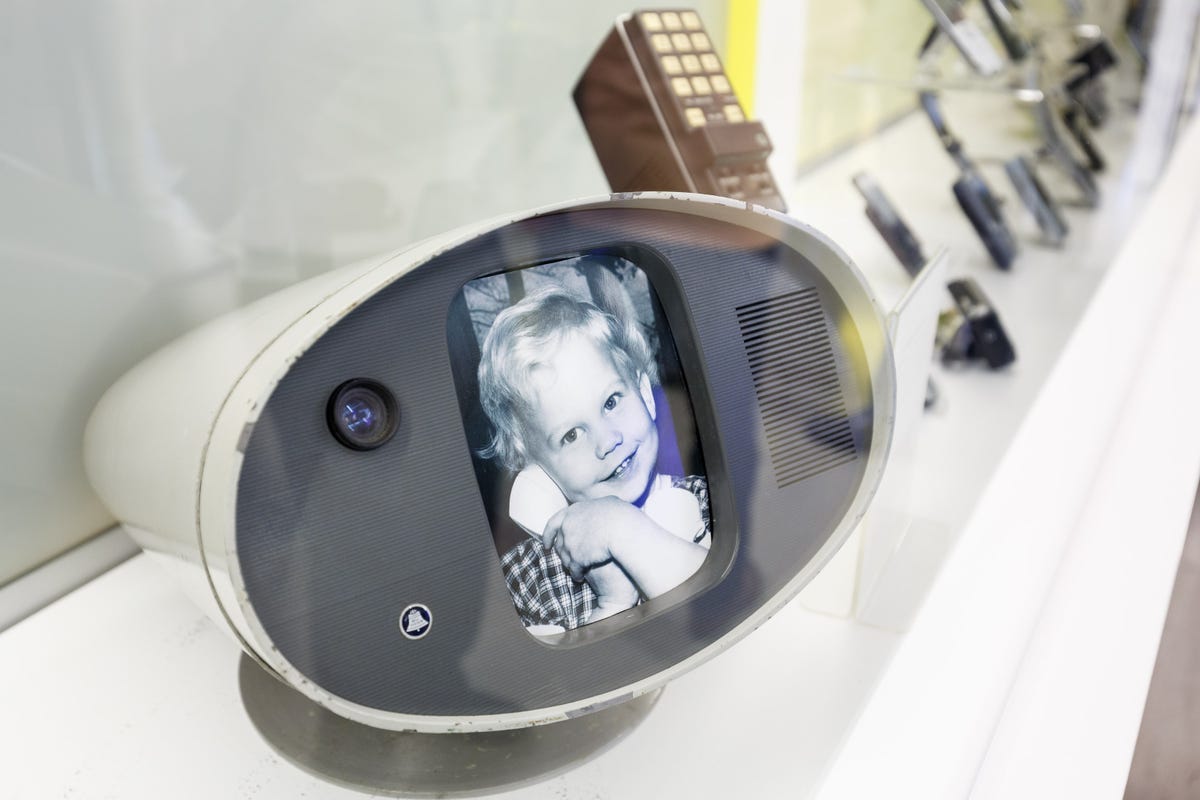See Bell Labs' historic phones and next-gen networks (pictures)
Bell Labs, famous for inventing fundamental telephone and computer technology, now is showing off work under Nokia to revolutionize mobile networks.

Nokia Bell Labs PicturePhone I prototype
Bell Labs is famous for everything from the transistor to verifying that the Big Bang really happened, but not all its work was a success. AT&T showed this Model I PicturePhone prototype at the 1964 World's Fair in New York. Video phones never made it to market, though.
Nokia Bell Labs Nuudle search software
Chris White of Nokia Bell Labs demonstrates the Nuudle "augmented thinking" software to help people sift through many types of data to get what they need.
Nokia Bell Labs mobile phone prototype
Bell Labs' 1978 prototype mobile phone tested in Chicago, Illinois. The Advanced Mobile Phone Service (AMPS) program was based on a Bell Labs research paper from 1947 by Douglas Ring.
Nokia 5G network prototype
With 64 antennas, this Nokia Bell Labs network base station can beam data to up to eight smaller wireless stations, each of which brings high-speed, fast-response networks to nearby homes. It uses 5G technology called massive MIMO (multiple input, multiple output).
Drone network expansion
A drone at Nokia Bell Labs lands a portable, solar-powered, short-range high-speed network unit on a roof in a demonstration.
Nokia Bell Labs 5G low-latency network demo
Domhnaill Hernon of Nokia Bell Labs shows the possibilities of 5G networks with a race car demo. With 5G communication delays of just a millionth of a second, people can pilot the cars remotely. With today's slower 4G, communication delays were too long for drivers to avoid obstacles. Low-latency networks will be important for tomorrow's self-driving cars.
Nokia Bell Labs external 5G antenna
Radio signals from next-gen 5G networks don't penetrate windows and walls well, so Nokia Bell Labs developed a system that pairs an outdoor antenna with an indoor link to the home network. The two are aligned precisely with strong magnets so they can transfer data even through triple-paned windows.
Nokia Bell Labs transistor
A scale model of the first transistor, developed at Bell Labs in 1947, is a couple of inches wide. It became the foundation of today's computer industry, with today's chips using billions of transistors.
Nokia Bell Labs PicturePhone II
A 1969 Model II PicturePhone prototype enabled two-way video calling and could receive computer data to show stock market reports and store catalogs.
Nokia Bell Labs touch-tone prototype
Bell Labs developed this touch-tone phone prototype in the 1950s to replace slower-dialing rotary phones that used electrical relays. The first touch-tone phones arrived in 1963, but AT&T added the star and pound keys in 1968.
Nokia Bell Labs President Marcus Weldon
Nokia Bell Labs President Marcus Weldon shows his vision for future networks.
Nokia Bell Labs Airframe
The Nokia Airframe brings some of the computing power of remote data centers closer to phones, self-driving cars and other networked devices. The close proximity overcomes delays that result from longer communication links.
Nokia Bell Labs text-first phone
Before Nokia lost its former dominance in the mobile phone market to Apple, Google, Samsung and others, it pioneered designs like this phone geared for text messaging.
Nokia Bell Labs camera phone
The new iPhone 7 has dual cameras that enable 2X optical zoom. The Nokia N931, though, achieved 3X zoom by mounting its 3.2-megapixel camera sideways, operated with a flip-out screen.
Nokia Bell Labs President Marcus Weldon
Nokia Bell Labs President Marcus Weldon.
Nokia Bell Labs in Sunnyvale, California
The Nokia Bell Labs facility in Sunnyvale, California, opened in 2011 and became a Bell Labs outpost after the 2016 acquisition of Alcatel-Lucent.

